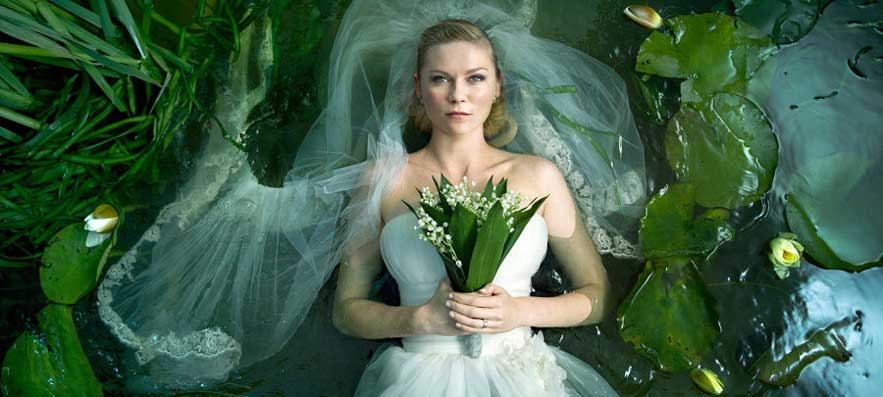
The imagery of drowning Ophelia has always inspired artists. Judging by the amount of pictures on the Internet, featuring all kinds of drowning females, I have a feeling the theme is constantly becoming more and more popular among young drawers. The pictures I’m talking about are usually more or less successful attempts at digital painting. It is worth to take a look at the origins of this theme.
In traditional painting the most famous Ophelia was depicted by John Everett Millais. Before I move on to the painting itself, a few words about the artist. He was one of the most prolific British painters of the second half of 19th century. He manifested artistic talent since early childhood and at the age of 11 he became a student in Royal Academy in London, where, given his young age, he was called ‘The Child’. There he also met Dante Gabriel Rossetti and William Holman Hunt – the three soon formed the Pre-Raphaelite Brotherhood. Millais painted portraits and genre scenes and the biggest success came with Ophelia, which he presented to the world in 1852. Inspired by a fragment from Hamlet, he depicted the suicide death of a beautiful woman. In fact, however, there is no such scene in Shakespeare’s drama. It is referred to in the fourth act by queen Gertrude and Ophelia’s brother, Laertes. The queen tells about how Ophelia fell into a stream while picking up flowers and slowly drowned while singing constantly. Here’s the fragment describing her death:
There is a willow grows aslant a brook,
That shows his hoar leaves in the glassy stream;
There with fantastic garlands did she come
Of crow-flowers, nettles, daisies, and long purples
That liberal shepherds give a grosser name,
But our cold maids do dead men’s fingers call them:
There, on the pendent boughs her coronet weeds
Clambering to hang, an envious sliver broke;
When down her weedy trophies and herself
Fell in the weeping brook. Her clothes spread wide;
And, mermaid-like, awhile they bore her up:
Which time she chanted snatches of old tunes;
As one incapable of her own distress,
Or like a creature native and indued
Unto that element: but long it could not be
Till that her garments, heavy with their drink,
Pull’d the poor wretch from her melodious lay
To muddy death.
Following the text, Millais reconstructed in detail the greenery from around the stream. Many plants shown in the painting have a symbolic meaning, like weeping willow and pansies being symbols of unrequited love, nettle – of suffering, daisy means innocence and violet – death at a young age. The broken branch of a tree is a symbol of life stopped halfway. Among the rich greenery, Ophelia’s body drifts down the stream. Her hands make a gesture of ornates, saints from Byzantine art. Her long, red hair tangle with seaweed and pale face makes a strong contrast with the darkened water and intensively colourful flora. It is an electrifying contrast between life, saturated with colours, and bleached, pale death.

Millais divided the work on the painting into two stages. He first painted the scenery and then the model. The stream and surrounding greenery took 5 months of work, 6 days a week, 11 hours per day. In a letter to his friend he complained about flies and strong wind. In the original version of the painting, apart from numerous species of plants, he also included a water rat. But when Millais showed his work to his uncle, the latter couldn’t guess what animal is that (he guessed a hare, a rabbit and a dog). Millais decided to remove the rat and add more seaweed instead.
The second stage was work in atelier, where he painted the model, 19 year old Elisabeth Siddal – the future wife of Rossetti. She laid for hours in water in a heated bathtub, wearing an elegant, heavy dress with silver linings. Despite heating the water, she got sick and Millais had to pay 50 pounds for a doctor.
An important factor was the technique Millais used. First, he surfaced the canvas with lead white pigment mixed with varnish. He painted with thin layers while the surface was wet, which gave an additional effect of luminosity and made the details stand out even more.
The final effect was amazing. The painting was shown in many places and made impression on people, it didn’t even slip Dali’s notice. The character of Ophelia became a favourite in Japan. In 2008 there was an exhibition of Millais’ works’ but the organizers decided not to put Ophelia on the advertisements to avoid inspiring young Japanese women to following in her steps.
Ophelia’s drowning remains in literature as the most poetic description of death. It is also a common theme in films. For example, the heroine in Lars von Trier’s “Melancholy” is shown in a wedding dress, floating slowly down the stream.

The imagery of a beautiful woman wearing an elegant dress and submerged in water has also inspired musicians, photographers and music video directors. A good example would be the music video “Down by the Water” and album cover for “To Bring You My Love” by PJ Harvey. The photos were taken by Maria Mochnacz. The singer, in a red, satin dress, high-heels and full make-up, dances underwater. The psychedelic video was nominated in 1995 to prestigious MTV Video Music Awards. In my opinion it’s worth seeing both because of great images and music.

Even more famous music video inspired by Ophelia is “Where the Wild Roses Grow” by Kylie Minogue and Nick Cave. It is as if Millais’ painting came to life.


